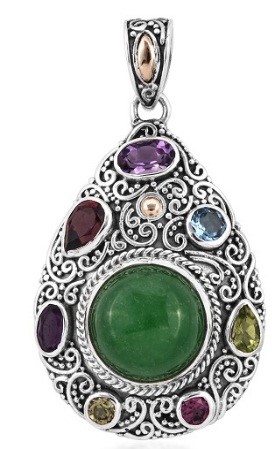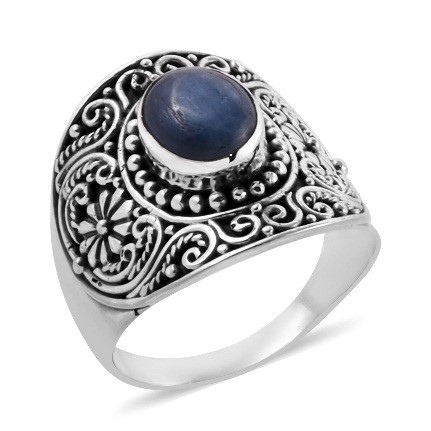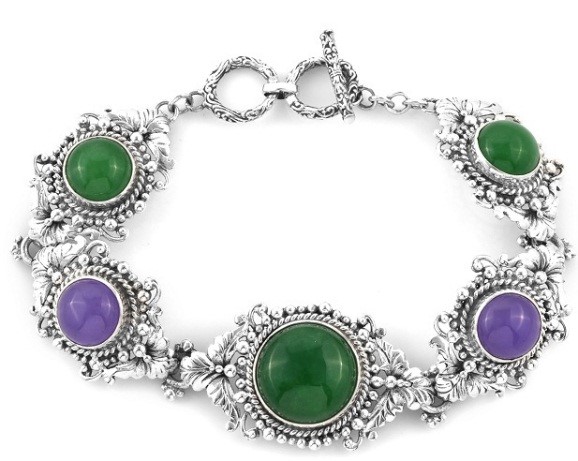BALI LEGACY COLLECTION

Bali jewelry is unique in its combinations of silver with other metals and gemstones in a unique fashion. The patterns are intricate, and eye-catching and often incorporate other metals such as gold as well as gems. The dark background of the unpolished silver serves to frame the patterns of the polished silver and highlight the gems and other metals. There are both Balinese and Javanese traditions seen in what is known as Bali jewelry. Balinese silversmiths tend to use small spheres of silver arranged in intricate patterns on a silver background. This technique is called granulation and provides a sharp contrast between the darker background of the natural silver and the highly polished spheres of silver. Javanese silversmiths use fine filigree work on smooth, polished silver background. Most of the Bali jewelry in the market today is a combination of these two traditions.
Bali Jewelry named for the island where it originated is known for its unique yet distinctive craftsmanship. Each piece of Bali jewelry is an original piece of art handmade in the traditional Bali design.
History of Bali Jewelry
The Balinese people have a long and illustrious history. Arts and crafts are a significant part of their culture and among their artisans is a community of highly skilled silversmiths. Silversmithing is practiced all around the island of Bali especially in a village in the South-central part of the island called Celuk.

Bali sterling silver work is part of an ancient tradition and history of the Balinese people. As far back as several hundred years before the birth of Christ Indonesia learned the metal work crafts during the Bronze Age from Southern Chinese and Southeast Asian traders. Metalworking skills grew with the influence of continuous contact from outside traders in spices and various items. Mining of critical metals such as gold and silver from Indonesia experienced no short supply. With the falling of the empire, Bali soon became the focal point of silversmithing undertakings.

Bali jewelers use traditional methods to produce their unique style of silverwork. The traditions have been handed down from the Southern Chinese and Southeast Asian artisans and many of the patterns and motifs used today have similar designs. Many families in Bali can trace their silversmith and jeweler roots back to the Majapahit Empire and the invasion of the Javanese in the 16th century. In Bali, metal smiths are known as Pandai a term that means both smith and smart. In legends in the area, the first goldsmith clans were taught their craft by the gods that were sent to earth to teach humankind civil behavior. Most jewelry in Bali while originally gold is now silver. The silver market is more popular worldwide and the booming demand for exports dictates the production. Based on the popularity of silver we see more pieces designed in silver today. When gold is used within the design, you see it as a delicate filigree enhancement to the piece.
Source
Bali Jewelry is sourced and created in Bali an island in the archipelago* of Indonesia in the Indian Ocean.
*Archipelago: chain or cluster of islands; a group of islands